How to Puppy Proof your House
Congrats on getting a new puppy! Now it's time to puppy proof your home. As the owner of a new puppy (or soon-to-be owner), you'll begin preparing for your new pet by finding a veterinarian and buying all the essentials.
Bringing a new puppy into your home is an exciting and joyful experience. However, it also means taking on the responsibility to make sure they are safe.
Just like a human baby, puppies are curious and will explore every nook and cranny of your house.
Because puppies like to explore the world through their noses and mouths, every item around them can pose a health risk. It would be bad if they chewed on the wrong things!
If you are bringing a new puppy home, take precautions to protect your puppy from injury. Usually, puppies are very curious, and they can get themselves into trouble in no time.
Take a look at our puppy checklist before bringing home a puppy to ensure your environment is as safe as possible.
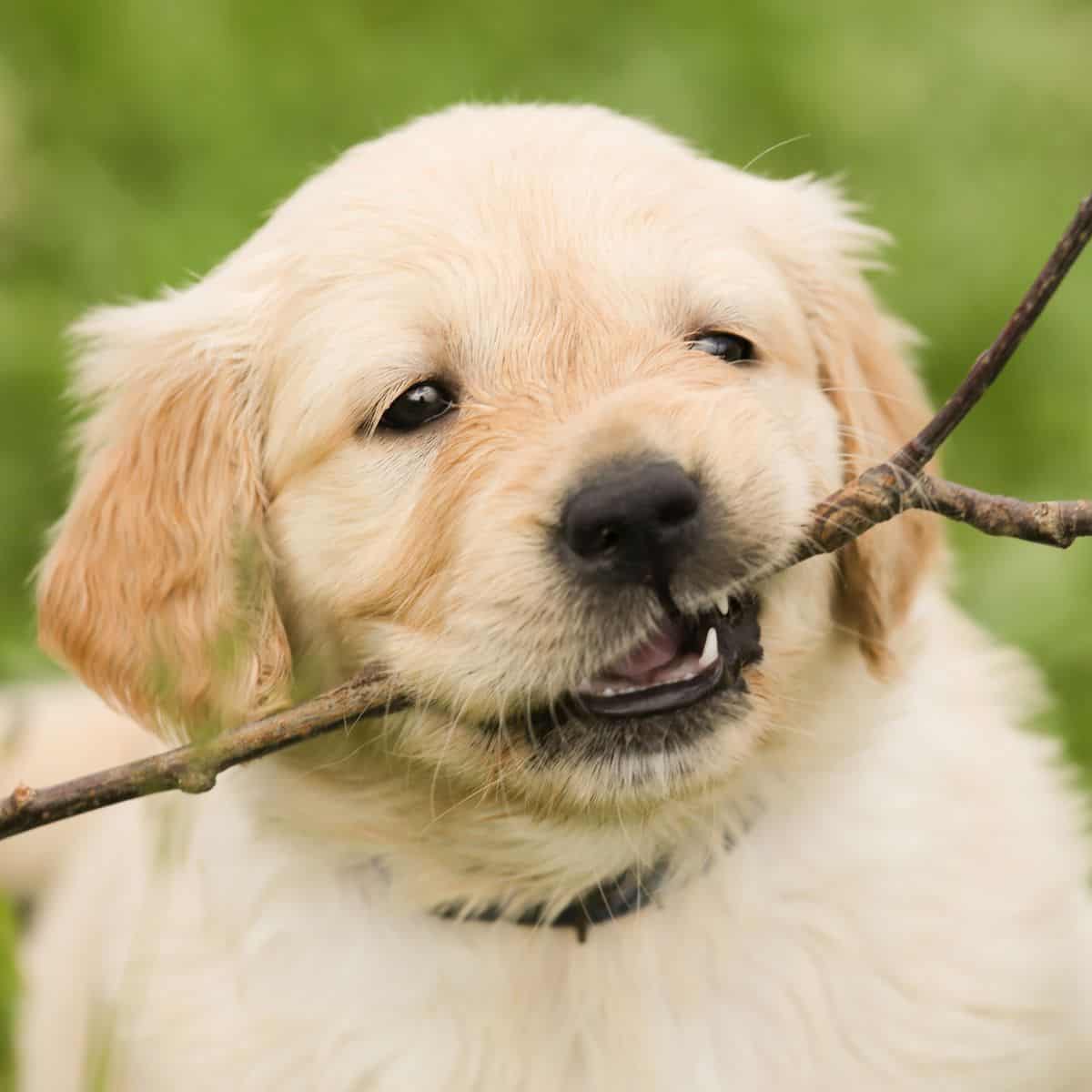
Disclosure: Some of the links in this article are affiliate links (Amazon Associate or other programs we take part in). As an Amazon Associate, I earn a small commission from qualifying purchases.
1. Secure Loose Cords and Wires
Puppies are naturally curious and may be drawn to chew on loose cords and wires, which poses a risk of electric shock or strangulation.
To mitigate this danger, secure loose cords and wires throughout your house by using cord organizers, cable clip, or even adhesive hooks.
This will not only prevent your puppy from chewing on them, but also help maintain a tidy and organized space.
You may also consider tucking cords behind furniture or using cord covers to further reduce accessibility and temptation for your curious puppy.
2. Keep Any Food Out Of Reach
Because of their natural food-motivation, dogs, cats, and other pets may try to eat food left on the dining table, counters, or any other surface that is within their reach.
Do not give your furry babies access to spicy seasonings in human food.
- Remember, even if the menu is not really dangerous for them, it is not a good idea to have them eat table food.
- Clear the table and counters every time you eat, or simply ban the animals from the dining area.
3. Hide Medicines and Supplements
The puppy-safe zone must be a drug-free zone.
Every year, human medication is the leading cause of dog poisoning, so make sure everything is safely stored in drawers and cabinets.
- Supplements, vitamins, and other medications should not be left on countertops and side tables.
- Dog medications should be stored separately from your own.
4. Get Rid of Poisonous Houseplants
Many common houseplants, such as lilies, ivy, and poinsettias, can be highly toxic to dogs if ingested.
It's important to identify any toxic plants in your home and relocated them to higher or inaccessible areas. Here is a list of poisonous house plants for dogs.
They may appear harmless, but they can cause health issues, from mild skin irritation to upset stomachs to death, if your pet eats them.
Consider using hanging planters or placing plants on high shelves.
- The most popular houseplants that are poisonous to dogs and other animals include sago palms, aloe vera, caladiums, and pothos.
- Be mindful of any bouquets or floral arrangements that may contain toxic flowers or foliage.
5. Pay Attention to Small Everyday Items
These items can cause problems when swallowed or chewed by our pets, such as coins, paper clips, rubber bands, buttons, and batteries.
- Even the smallest objects can be hazardous.
Make sure that you keep all of your painting materials in a safe place after work hours if you enjoy painting or working on paper crafts.
6. Install Baby Gates for Safety
One effective measure to ensure the safety of your puppy in your home is the installation of dog gates.
These gates serve as barriers to restrict access to certain areas, keeping your puppy away from potential hazards or areas that are off-limits.
Whether it's stairs, rooms with delicate furniture or objects that could be dangerous if chewed on, baby gates provide a physical barrier that prevents your puppy from entering these gates.
It is recommended to choose sturdy gates that are specifically designed for pet safety to prevent any accidents or escape attempts.
By installing baby gates strategically throughout your home, you can create designated safe spaces for your puppy to roam freely while minimizing the risk of accidents or damage to your property.
7. Keep Cleaning Products out of Reach
Many household cleaning products contain toxic chemicals that can be harmful if ingested or even come into contact with a puppy's sensitive skin.
To prevent any accidents, it is essential to store these products in locked cabinets or high shelves that aren't reachable for your exploring puppy.
Consider installing child safety locks on cabinets to provide an extra layer of protection.
Plus be mindful of any cleaning products you use on surfaces that your puppy may come into contact with, opting for pet-friendly and non-toxic alternatives whenever possible.
8. Not All Dogs Can Swim
It's true, not all dogs can swim!
- A potential drowning hazard is a swimming pool, toilet, bathtub, or sink.
Despite their love of water, golden retrievers should not be left alone by themselves near any body of water.
- Also, do not let your pet drink from unattended water containers. This is how dogs come down with Giardia.
Those items may contain parasites, chemicals, and other harmful elements that you don't want her to consume.
9. Give Your Puppy Their Own Safe Space
It's great to spend time with our dogs, but they also need their own space.
To provide them with their own safe space in your home, choose the most comfortable spot for them to rest and sleep.
- It can be a pen, a crate, or a fluffy spot in the corner of your room.
- Pets, especially dogs, are very curious by nature. It is important for you to set boundaries for your pet.
- It is important to keep your dogs from getting into areas you don't want them to go in if you live in a small space.
10. Garbage Cans and Compost Piles
Any food that is dangerous for dogs continues to pose a threat even after it is thrown away.
When it becomes moldy, it becomes even more dangerous. Cats aren't known to rummage through trash cans, but dogs and other pets will.
- A trash can that prevents pets from knocking over and looting is worth the investment.
Before adopting a dog, think about how much work will be involved in making your space safe for them.
- If you don’t want any hassles when picking out new furniture or redecorating in the future, take these precautions now so that there are no surprises later on!
11. Batteries and Remote Controls Are Not Safe
I strongly recommended that you pick up all remote controls, electronic toys, and key fobs that contain batteries and keep them out of reach.
Besides chewing and swallowing small parts, swallowed batteries are even more dangerous because they can cause burns inside your pet's esophagus as they travel down. This is especially true for disc batteries.
12. Set Limits To Puppy-Proof
Curious by nature, your puppy will explore as much as possible and test their limits.
- Secure your puppy with baby gates or pens and close doors to prevent them from getting into (or out of) areas they shouldn't be.
13. Watch Your Puppy Near Heights
Because puppies are clumsy and have fragile bones, they are at risk of injury if they fall or attempt to jump while seated on the couch or in a child's arms.
You should keep your puppy off, tall furniture and have young children sit when holding it until the puppy becomes less fragile and more coordinated.
14. Watch Your Bags
If you have a purse, backpack, gym bag, or diaper bag, you likely have one if few items that pose a threat to your new pup.
As xylitol finds its way into more and more products, such as sugar-free gum, hand cream, etc., poisoning is becoming more common.
- Check out the list of 700+ xylitol-containing products here.
In order to prevent accidental pet poisoning, store bags inside closed closets or on sturdy hooks that are high and out of reach.
- Do not let your visitors or family members off the hook either.
Final Tips on Puppy Proofing your Home
Pin It and Save it for Later
In conclusion, taking the time to puppy proof your home is an important stop in making sure your puppy is safe in your home.
By identifying potential hazards, securing dangerous items, and providing a safe and stimulating environment, you can create a happy and healthy space for your puppy to grow and thrive.
Remember to always supervise your puppy and continue to reassess and adjust as they grow and explore their surroundings.
By following these tips and taking a proactive approach, you can enjoy a harmonious and safe living space for both you and your puppy.
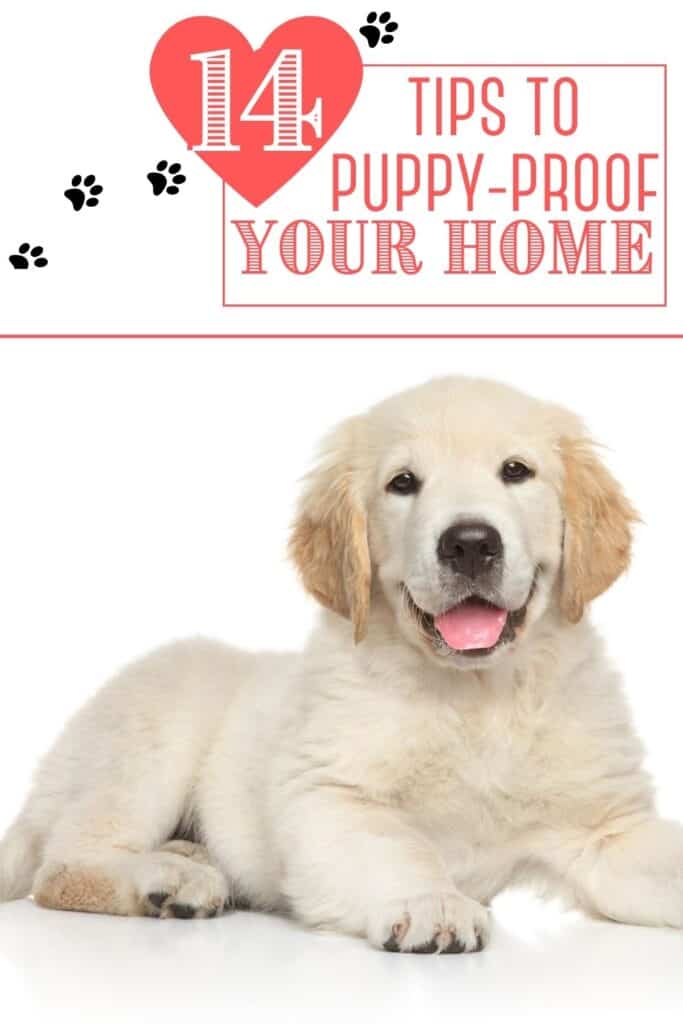

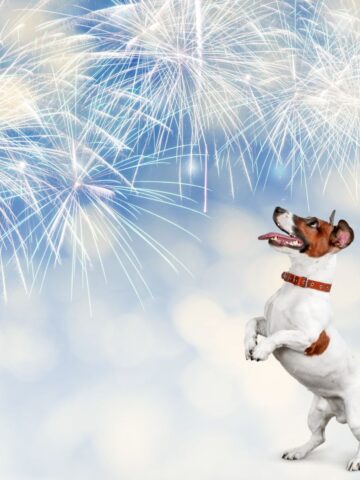

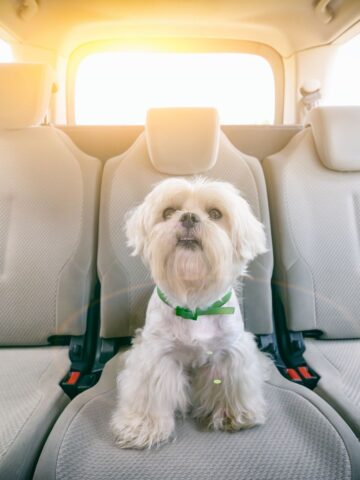
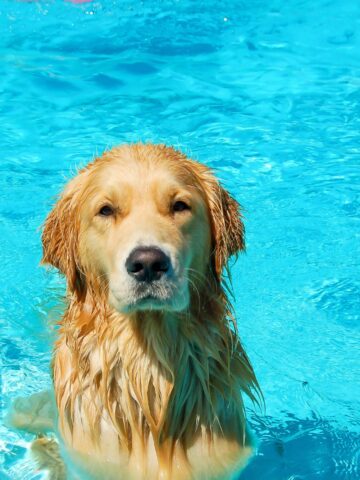
Leave a Reply